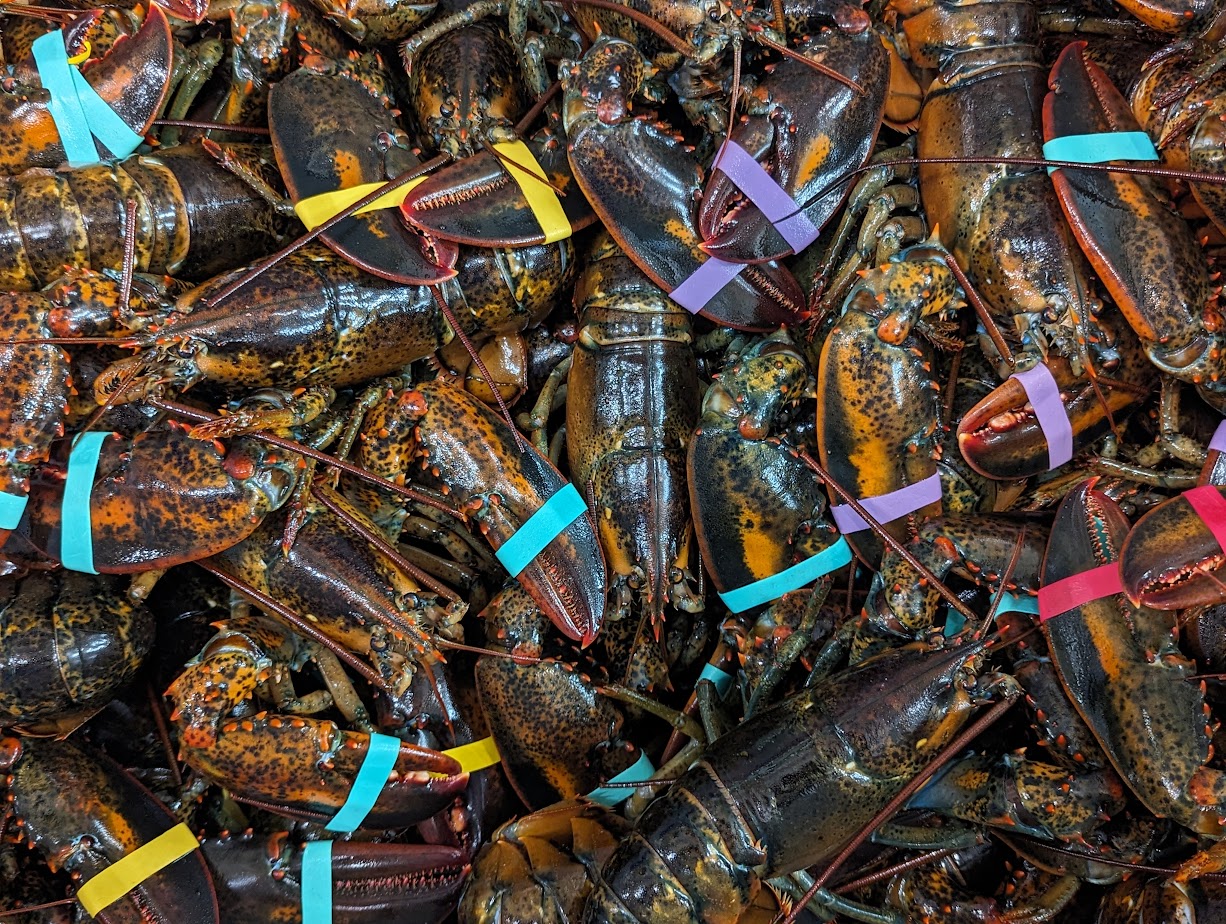On board the Lucky Catch with Captain Tom Martin and his crew
Portland, Maine
USA
On a bright, clear afternoon with a breath of fall in the air we boarded the “Lucky Catch” on Long Wharf in the Old Port district of Portland, Maine for an hour-and-a-half tutorial into the art of catching lobsters in Maine.
Navigating our way through the throngs of tourists disembarking from cruise ships we made our way to the dockside office of Lucky Catch Cruises where we were greeted by Captain Tom Martin and his enthusiastic crew. It was clear from the onset that these people love what they do.
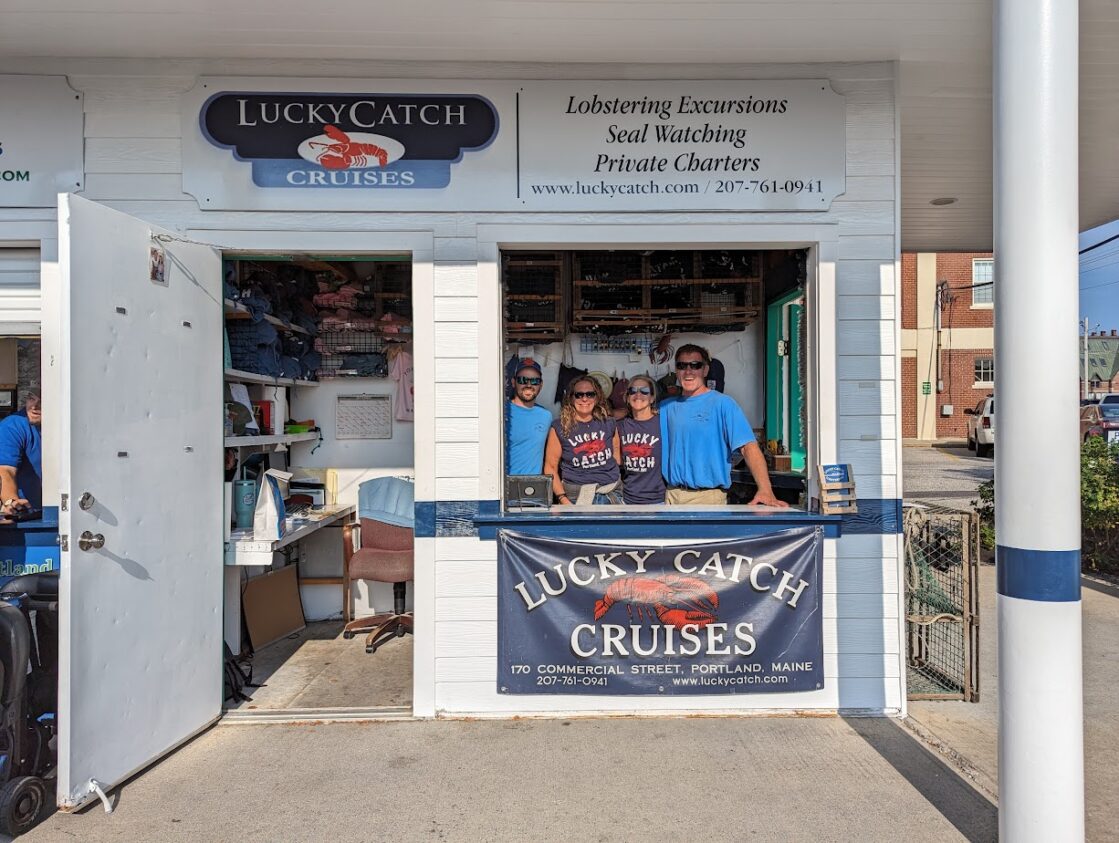
With tickets secured we gathered at ramp 3 for the 3:45 boarding. After a short safety briefing we headed out to check on three of Tom’s 150 lobster traps. The excitement among the guests was palpable as Tom shared some of his lobstering history while guiding his boat to the first set of traps. Soon everyone on board was donning their heavy duty commercial fishing aprons along with either a right or left handed insulated glove. Things were about to get wet.
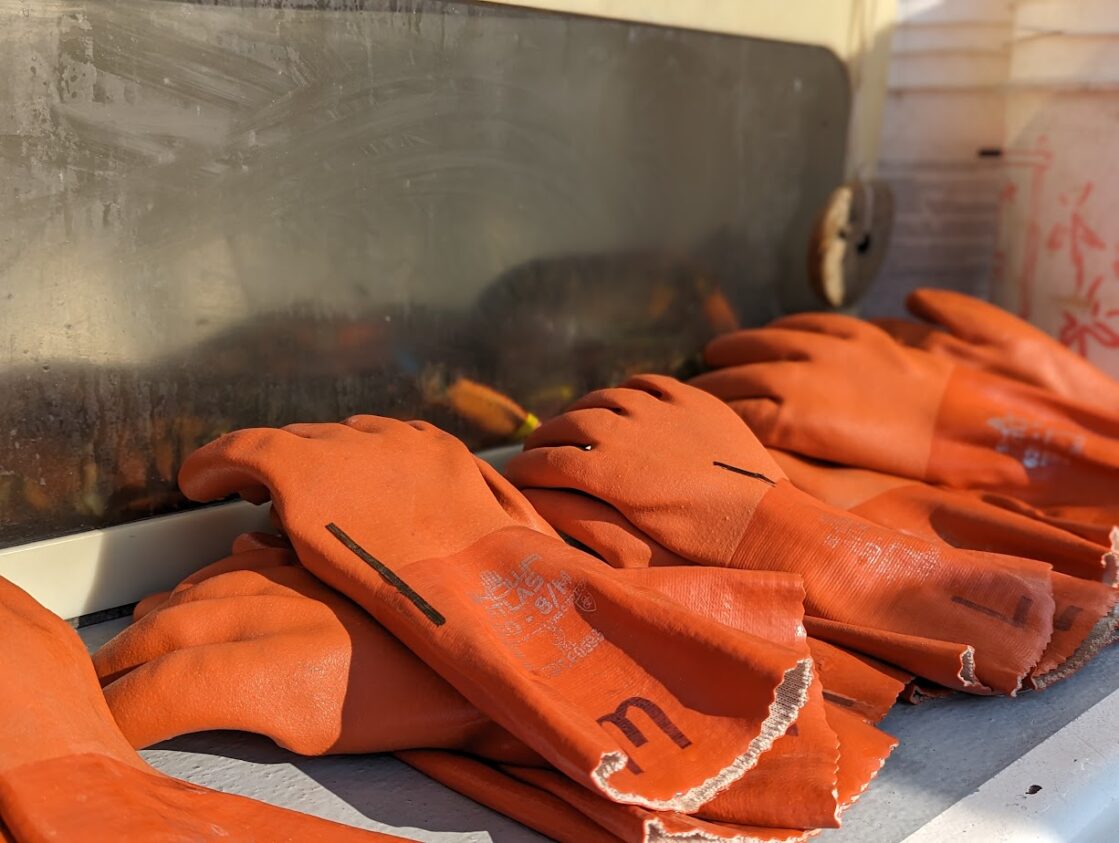
As Tom deftly idled his boat up to the first set of traps, marked by his distinct color coded buoys, the crew hauled in two traps which yielded about eight lobsters along with some very combative crabs. This is where the heavy duty gloves came in handy as trying to extract the crabs from the cages required some precise handling.
While attempting to remove the feisty crustaceans from the cages we quickly learned that their sharp and strong grip can be quite painful, as anyone who has ever been pinched by one can confirm. It’s an introduction to crabs that you won’t soon forget! By comparison the lobsters were considerably less challenging to handle.
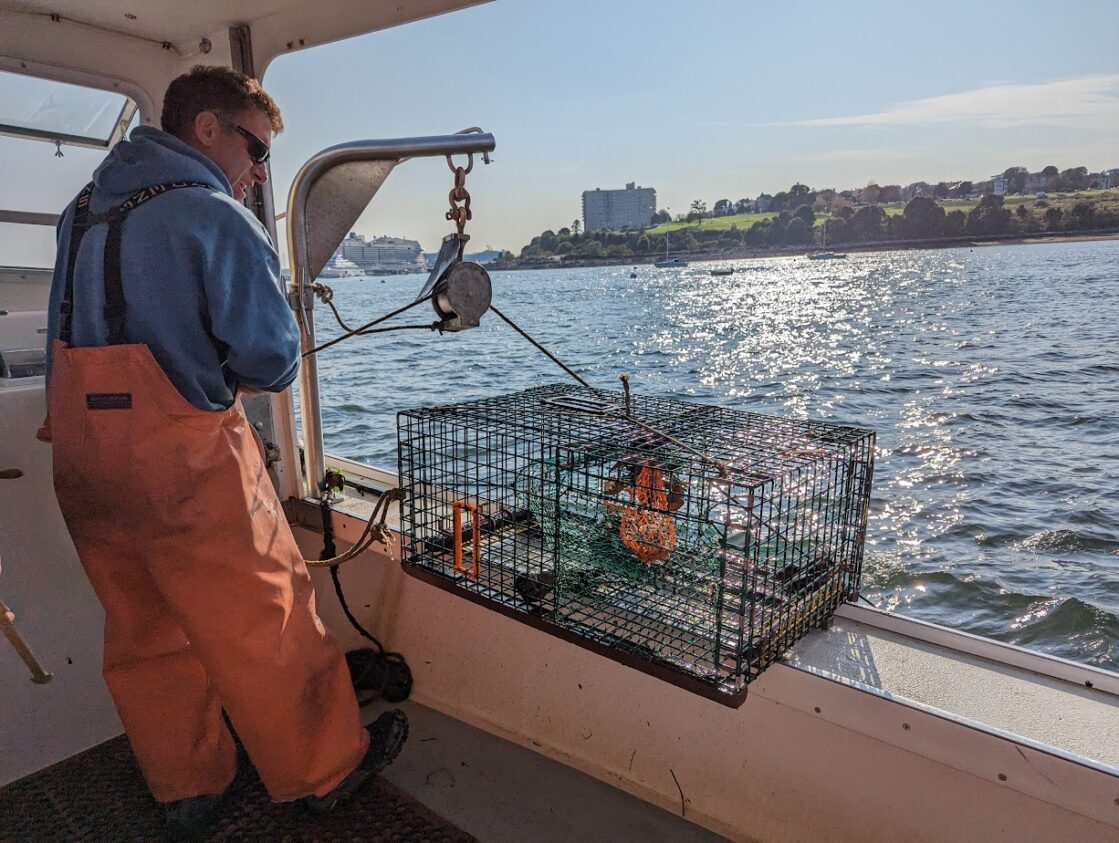
Tom shared with us that just because there are lobsters in the traps does not automatically guarantee that they are “keepers”. First they must be measured and all females must be checked for eggs. Lobsters that are too small get returned to the sea. The same goes for any females carrying eggs. These strict measures insure that the lobster population remains sustainable and healthy for future catches.
Next up on the agenda was to bait the empty traps before pushing them overboard to await a future harvest. In our case the bait consisted of whole herring along with some fish heads placed in mesh bags which were then securely tied to the inside of the traps. Once baited, the traps were returned to the seabed as we motored to our next destination.
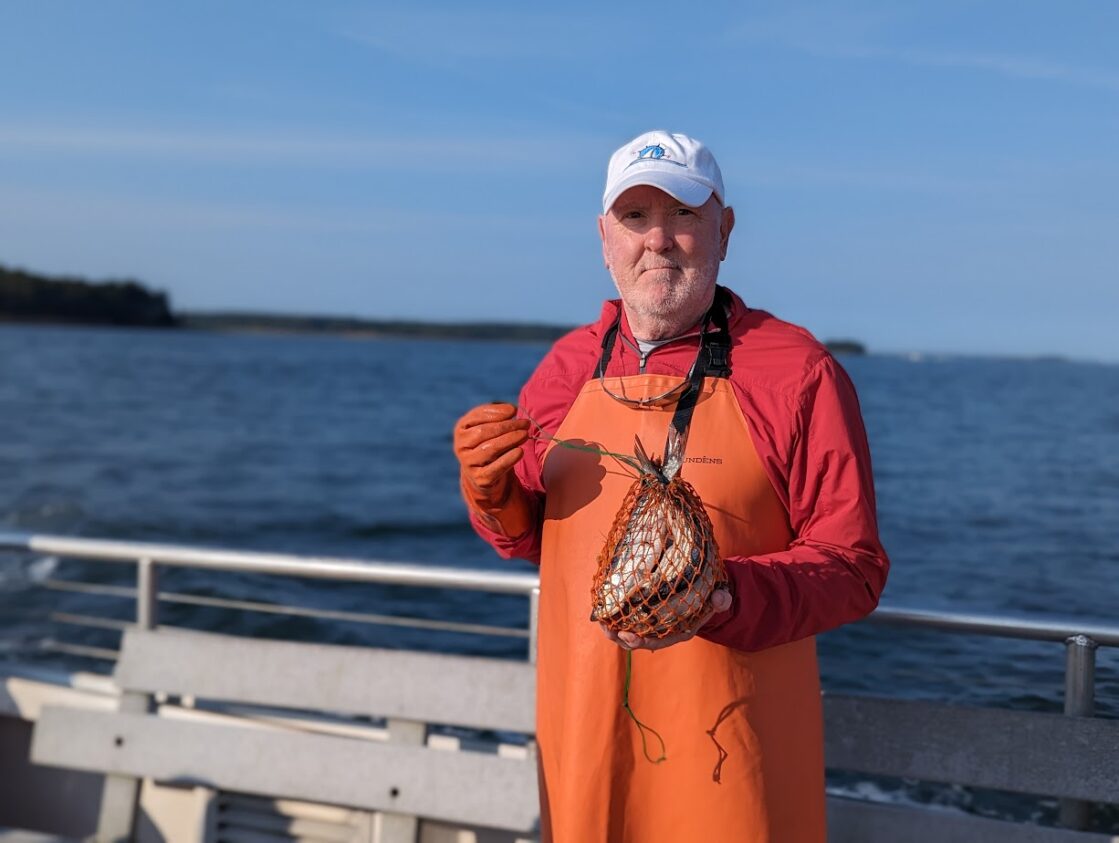
In between stops we were shown how to measure lobsters for keeping along with the difference between sexes. As part of our education clamps were passed around the boat with colorful rubber bands so that we could experience “banding” the claws of the lobsters. An easy feat compared to managing the plucky “you’ll-never-catch-me” crabs!
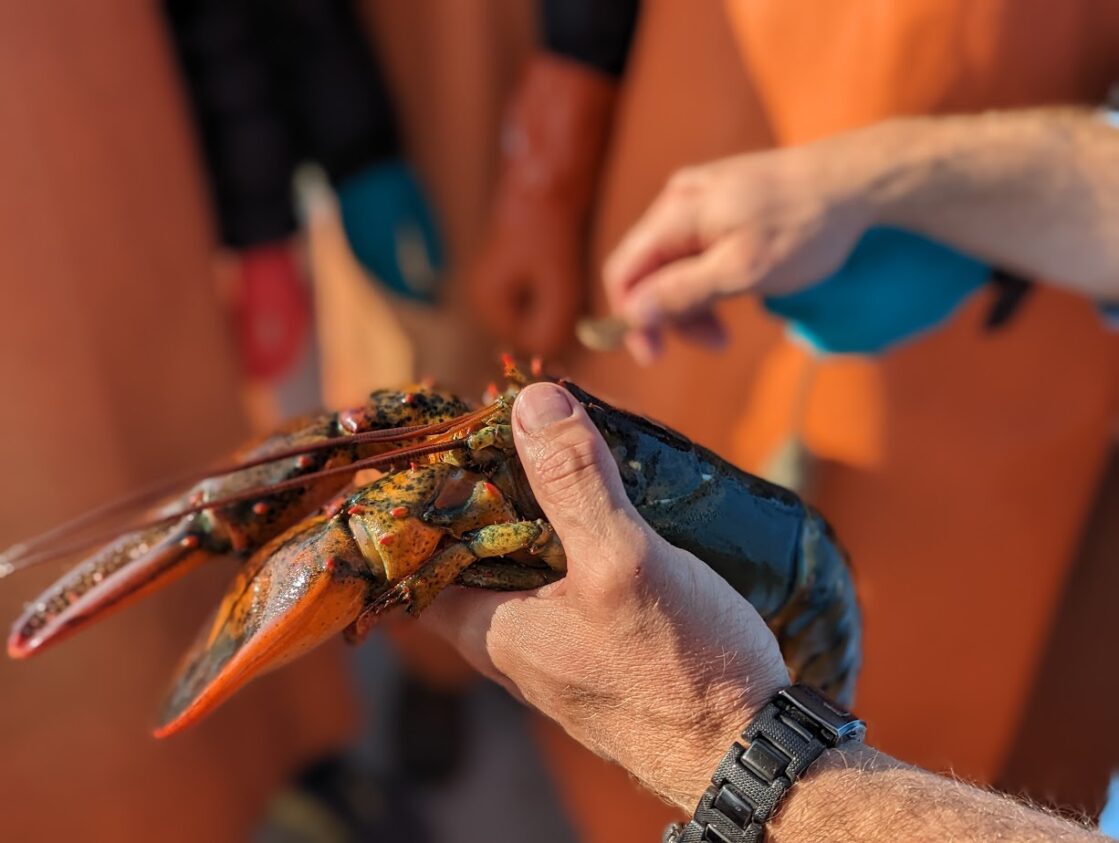
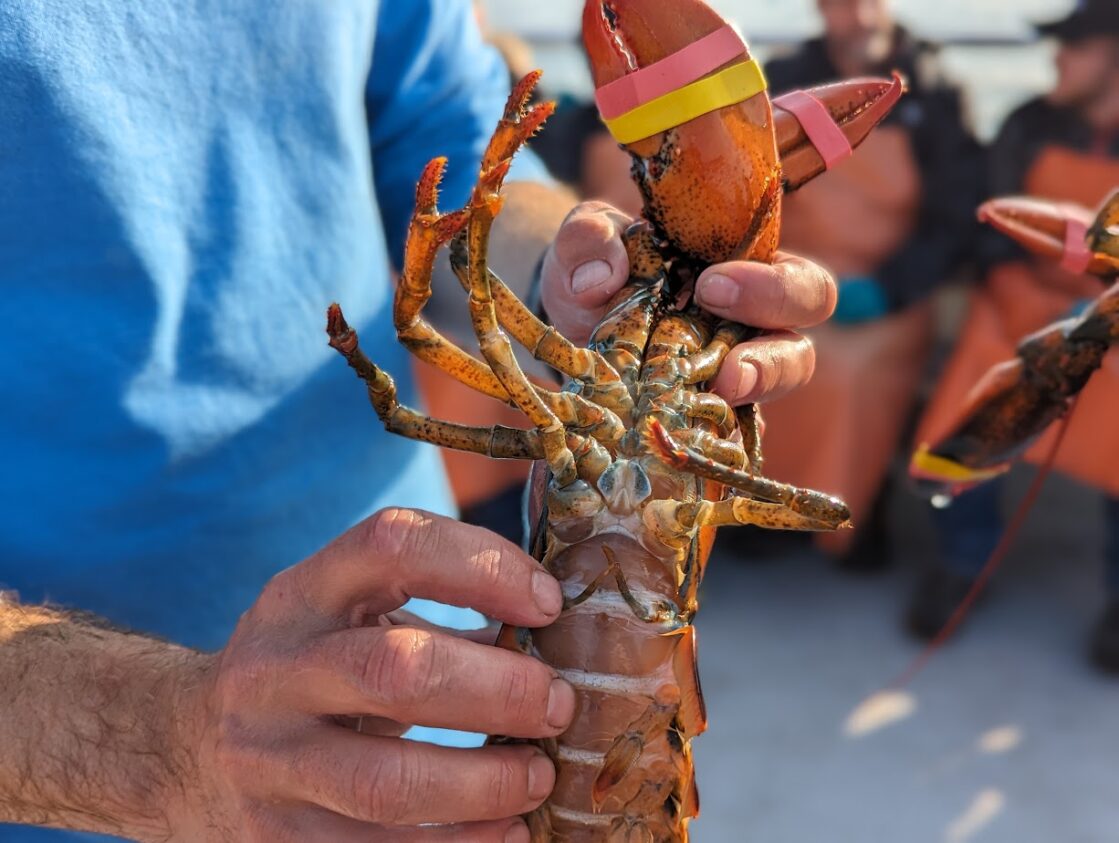
Tom Martin is a man deeply rooted in the tradition of lobstering in coastal Maine. Since he first stepped on a lobster boat as a summer job in 1984 he knew that lobstering was a vocation that would fulfill him like no other profession could. Lobstering is a way of life in Maine and Tom is one in a long line of dedicated lobstermen, and women, who endure early hours, long days and hard work under sometimes harsh conditions to live a life that they love.
In 1996 Tom purchased the 37 foot Lucky Catch with a vision to not only add another vessel to his fleet but to share his world with others by taking passengers out to learn about the day-to-day routines of the lobstering trade. Now nearly 30 years later we were among the thousands of people that Tom has shared his passion with as we were treated to one of the most unique experiences in all of our travels. As we harvested the third, and last, set of traps we were struck by how challenging this line of work can be.
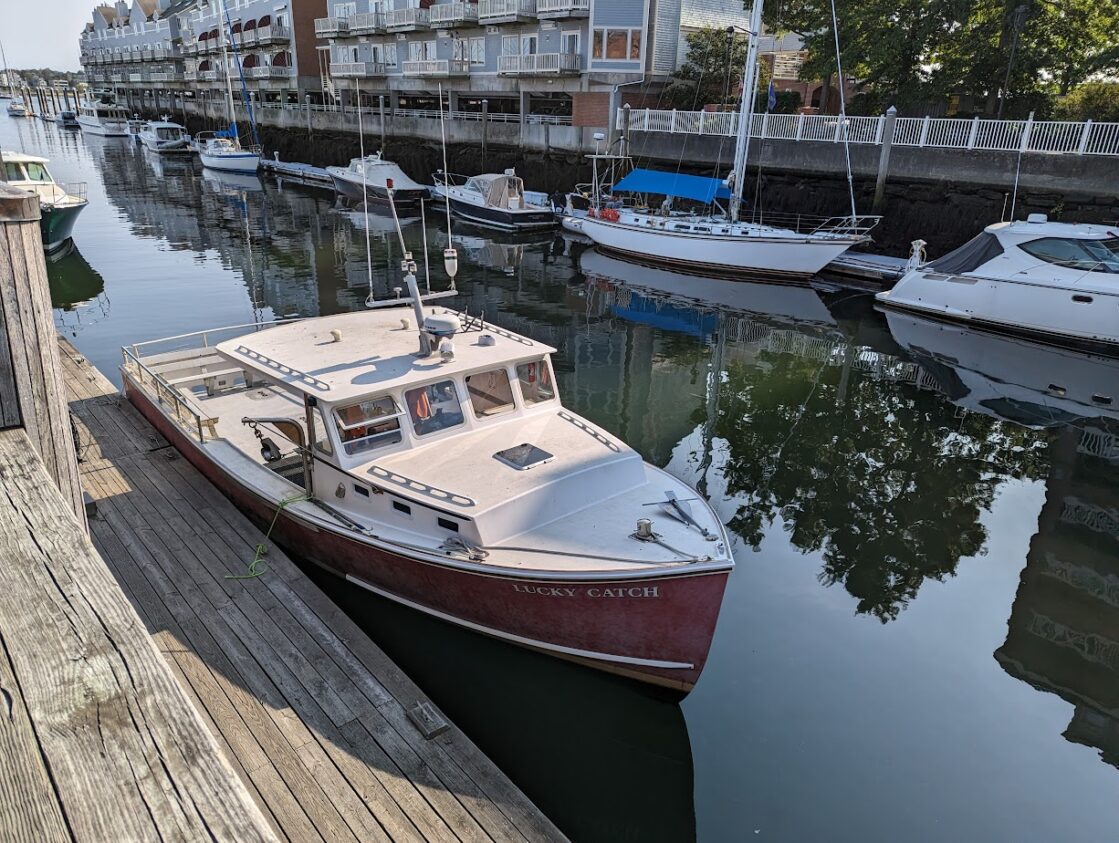
As Tom turned the Lucky Catch around and headed back to Long Wharf we couldn’t help but feel a sense of gratitude for the bounty that these hardworking men and women bring to fishmongers, restaurants and home chefs around the country.
Back at the dock he shared that although the touring season would soon come to a close he and his crew would soon be gearing up for the real work of commercial lobstering which usually runs through late December. Needless to say, the winter months will bring less than the ideal weather we experienced on our trip.
The thrill of seeing how a real lobster boat works was made even better by simply being on the water, breathing in the warm salty air while taking in the breathtaking scenery of the Maine coast as rocky cliffs, craggy coastlines and quaint fishing villages served to highlight the rugged beauty of this region.
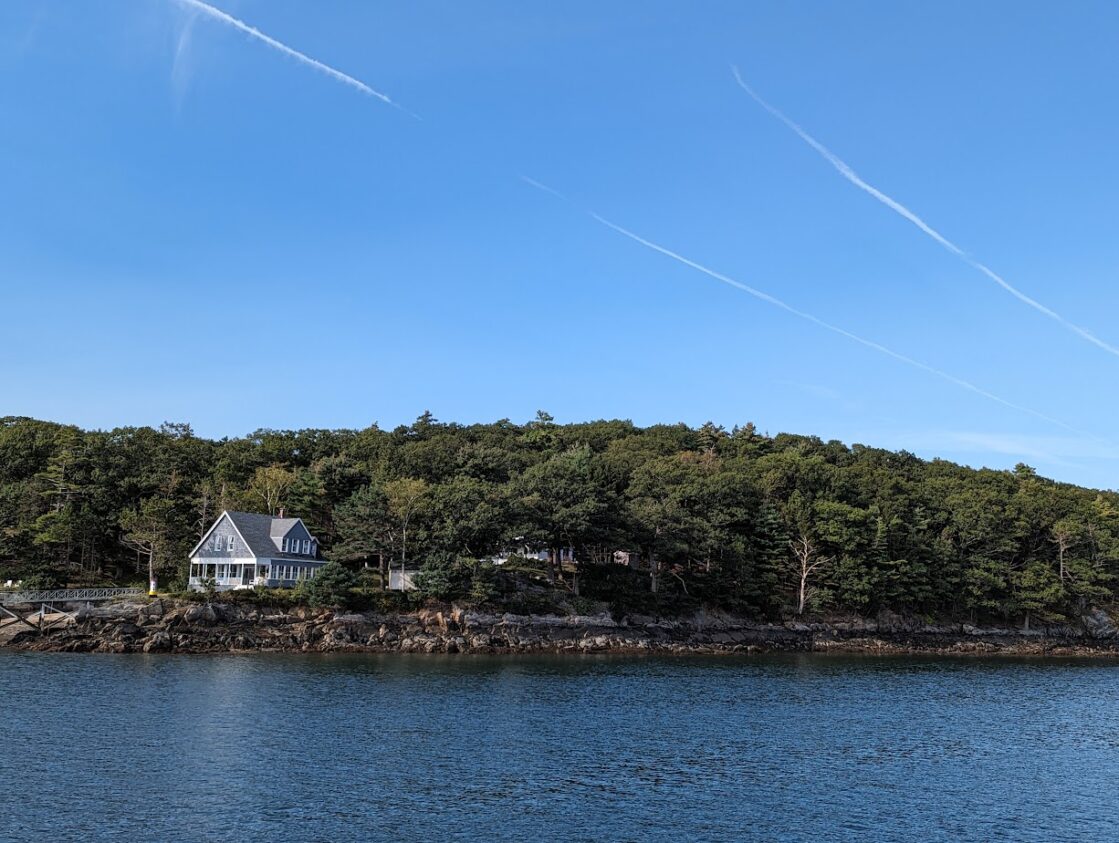
Maine remains the last vibrant place on the American Eastern Seaboard to harvest lobster and in spite of the numerous challenges that lobstermen face what they all have in common is a profound connection, and respect for, the sea and the lifestyle. Along with their abiding love of the sea comes the tremendous pride in providing a healthy, sustainable source of seafood for millions of people.
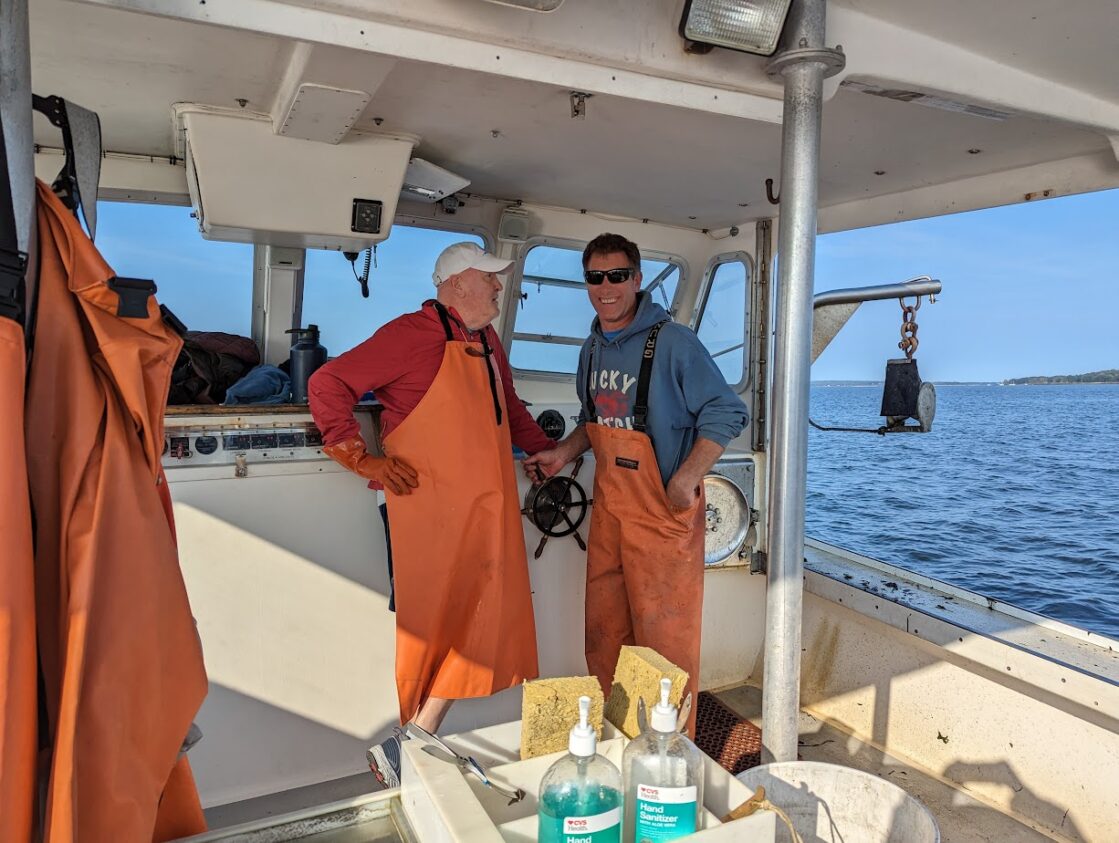
If you ever visit Portland, Maine be sure to book an excursion with Lucky Catch Cruises. You will not only gain an appreciation for these hardworking men and women but you’ll have a blast doing it!
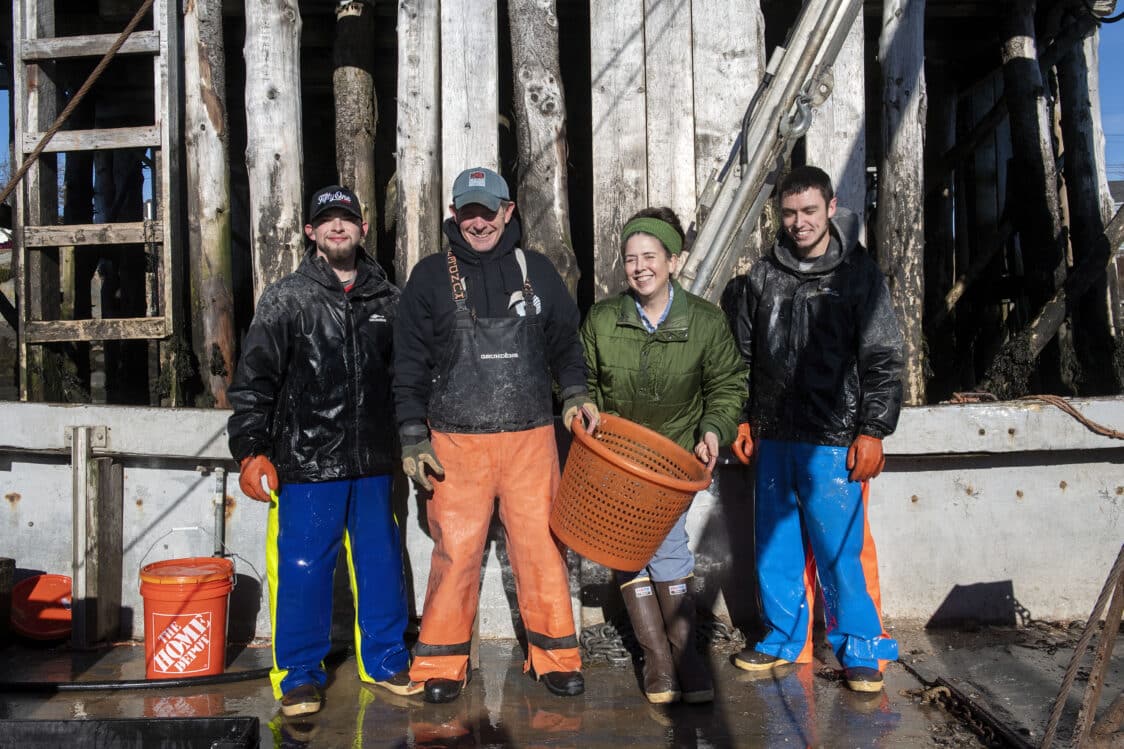
A special thanks to our good friend Togue Brawn, the owner of Downeast Dayboat (the best scallops in the world!). It was Togue who connected us with the Maine Lobstermen’s Association who in turn connected us with Tom and his friendly crew.
